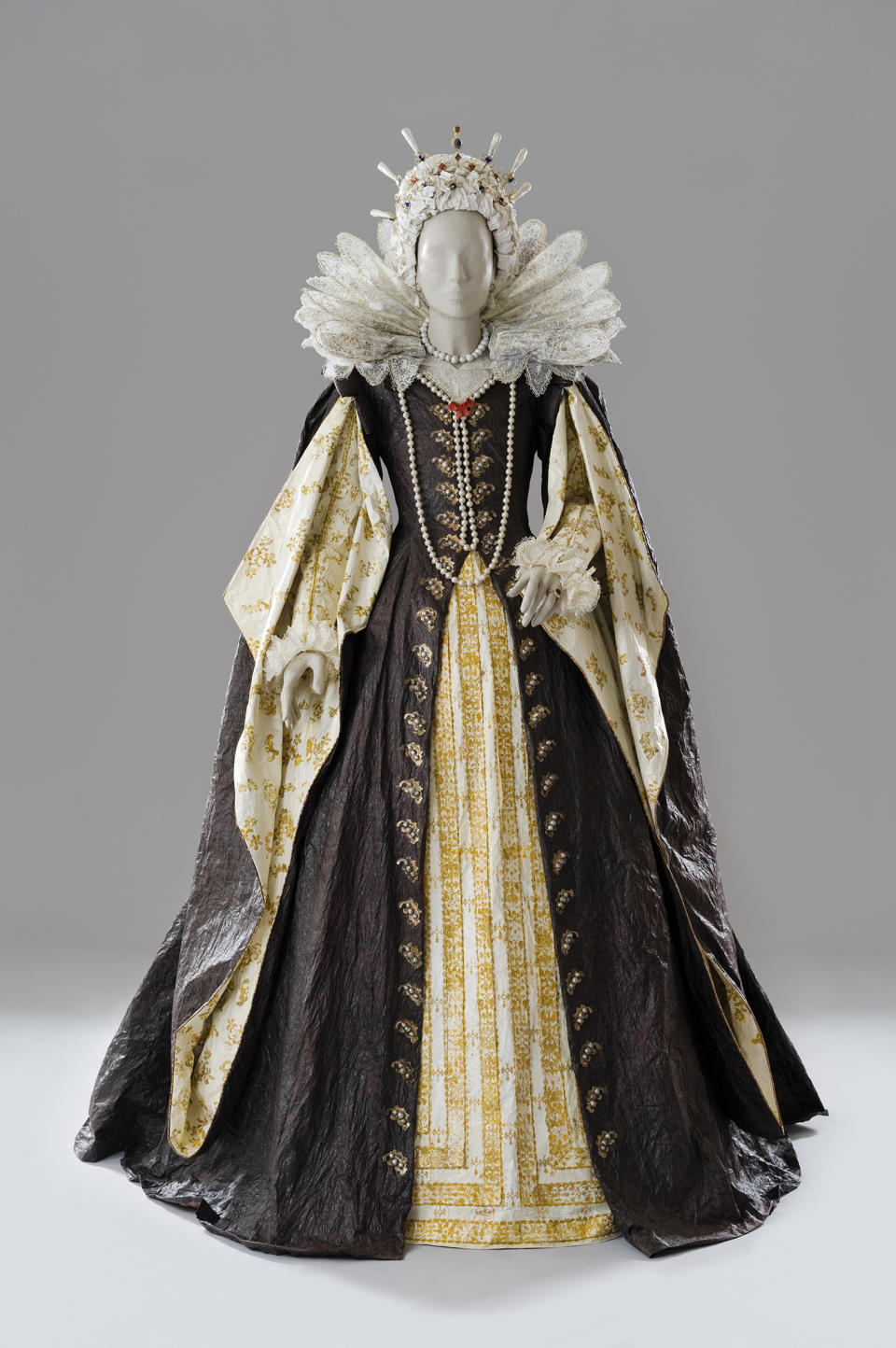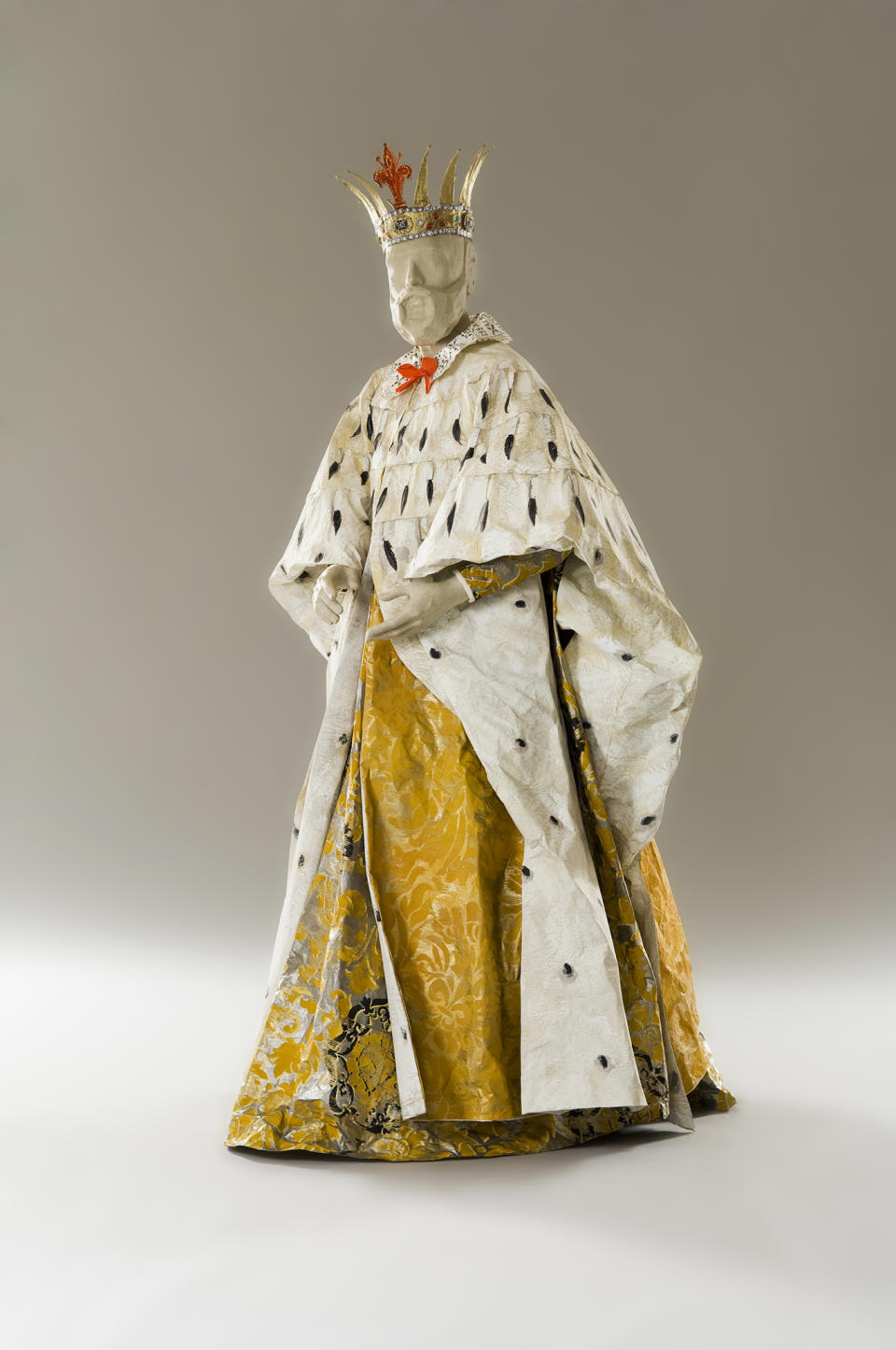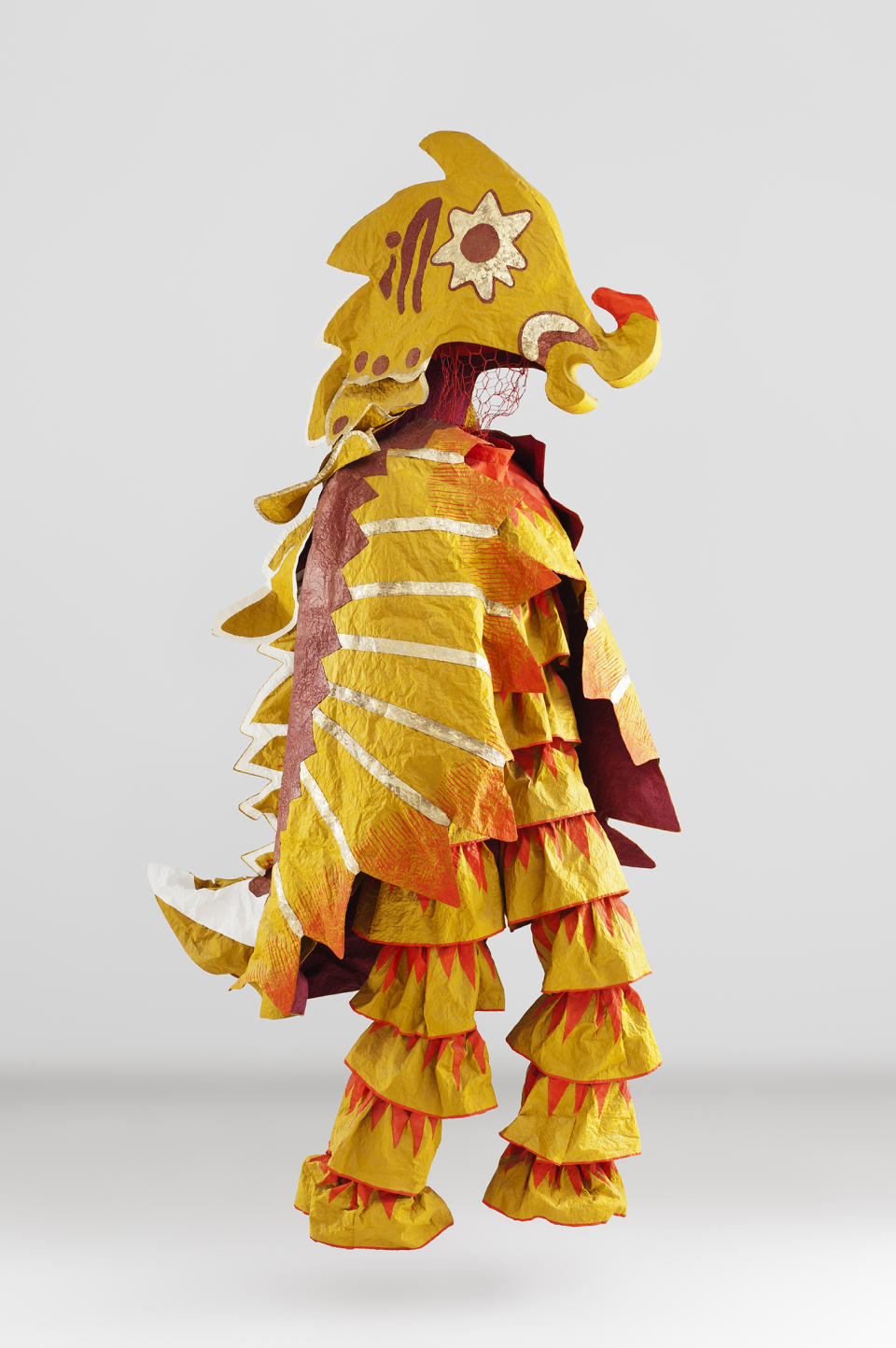Paper-made Garments Chronicle 500 Years of Fashion
- Oops!Something went wrong.Please try again later.
- Oops!Something went wrong.Please try again later.

Five centuries of fashion is a lot to take in, but Belgian artist Isabelle de Borchgrave delivers the highlights with intricate replicas entirely made from paper with paint.
Her creations — reinterpretations of historic garments including the Renaissance pieces worn by the Medici family, gowns worn by Queen Elizabeth, and designs by grand courtiers of the 19th and 20th centuries — are on view in “Isabelle de Borchgrave: Fashioning Art from Paper” at the Munson-Williams-Proctor Arts Institute Museum of Art through Jan. 9. Those who are not within range of the Utica, N.Y., location can check out her finery online at the museum’s site.
More from WWD
The Belgian painter and sculptor initially set up a studio that focused on fashion and interior design, routinely using fabrics she worked on as canvases for her art. She started designing extravagant paper costumes by manipulating paper and painting trompe l’oleil designs. The wardrobes of such historical and well-known figures as Elizabeth I, Marie Antoinette, Mariano Fortuny and the Empress Eugenie are among the re-creations that de Borchgrave has made. She could not be reached Wednesday.

Courtesy of Munson Williams Proctor Arts Institute
The Brussels-based de Borchgrave has also collaborated with Comme des Garçons, Christian Dior, Hermès, Lanvin, Caspari and others.
In the U.S., more than 100 of her paper creations are being shown, including some that were inspired by the works of Leon Bakst, Giorgio de Chirico and Pablo Picasso. There is also a sampling from her Kaftan series that was inspired by Silk Road textiles of Central Asia.
Munson-Williams chief curator Stephen Harrison said, “This whole idea of tromp l’oleil has fascinated artists and sculptors through the ages. And trying to create something from one medium into another and fooling the eye. Her works are really adaptations of earlier gowns portrayed in portraits, other paintings or are [based] on actual works of fashion.”
The intricate gowns and other items are all designed in paper down to the buttons, lace, embroidery and everything else. Depending on the degree of elaborateness, one of de Borchgrave’s could take a couple of months or six months, Harrison said.

Courtesy of Munson Williams Proctor Arts Institute
With photo murals depicting the works of art that inspired some of the artist’s designs, viewers will see the connection with trompe l’oleil and how she is moving from textiles to paper, he said.
Instead of transporting pieces separately in individual boxes, the works in the show are being transported on their mannequins in quite large crates, Harrison said.

Courtesy of Munson Williams Proctor Arts Institute
Her creations being made of paper will inspire young designers, since it is so easy to work with and it remains an important part of fashion design in that patterns are drawn and cut from paper, Harrison said. “Continuing through the process, you just lose the stitching and it’s more about construction than it is about sewing. The method is different, but what you are trying to achieve is a similar result.”
To that end, a runway fashion show partially inspired by the exhibition in late October was held at a local community center. The catwalk looks were made by local refugees, fashion students and staff from Herkimer County Community College. “Young designers in our community created works in paper and they went down the runway. It was just extraordinary — the kind of creativity that Isabelle’s works inspired in young people,” Harrison said.
Next fall Munson-Williams will feature the work of Brooklyn-based artist Lesley Dill, who creates “sculptural dresses that incorporate quotations, making her work about the spoken word, as well as the three-dimensional form,” he said.
Best of WWD
Sign up for WWD's Newsletter. For the latest news, follow us on Twitter, Facebook, and Instagram.

